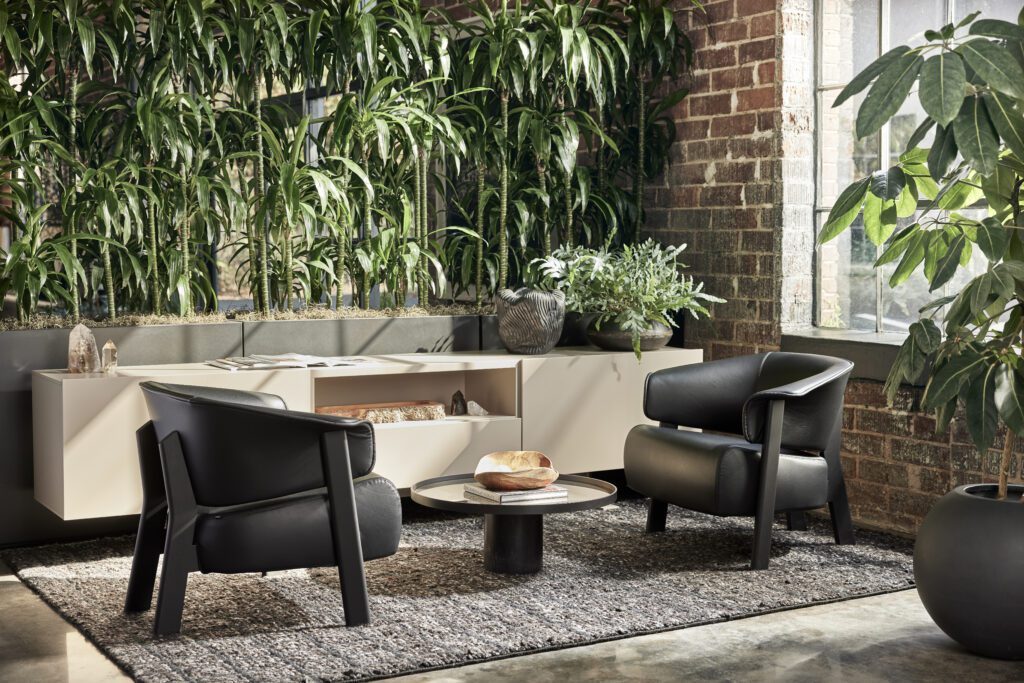05.10.23
4 Trends Driving the Workplace Forward
Insights
The world of work is constantly evolving. Both employers and employees are continuously adjusting to new needs and expectations for when, where, and how we get things done. We need to understand the latest trends in the workplace and business to move forward.
From the importance of inclusive design to the rise of hybrid work, emerging trends not only change the ways we work, but also how we live. Here are 4 important trend topics impacting how the world does business today, as we move toward the future.
1. Design Equity
Design equity seeks to make products, services, and environments inclusive and accessible for all. In the workplace, prioritizing design equity addresses factors such as neurodiversity, age, gender, ethnicity, language, socio-economic status, and disabilities to support all people in doing their best work.
One way to achieve equity through design is by creating versatile, adaptable workspaces and furnishings. Companies are incorporating universal design principles into their office spaces, with wider hallways and doorways, adjustable workstations, acoustic solutions, and accessible technology. Recognizing that 15-20% of the population is neurodiverse, many are also adding innovative spaces that feature thoughtful neuroaesthetic designs that support a healthier state of well-being for all people.
In addition to creating a welcoming and inclusive environment that benefits all employees, designing with equity in mind can lead to increased productivity, better employee retention, increased customer satisfaction, improved reputation, and innovation.

2. The Work Resort
With the rise of hybrid and flexible work arrangements, companies are addressing the desire people have to combine work and leisure. Workplaces are being designed to offer the amenities and experiences of a luxury resort. This creates environments that feel less like the traditional office and more like a destination.
However, it’s important to note that work resorts are not just about providing fun perks and luxurious-feeling amenities. They’re also about creating a culture of trust and flexibility that allows employees to work in a way that suits their individual needs and preferences.
As companies continue to compete for top talent, we can expect to see renovations that make the workplace feel more inspiring, warmer, and welcoming. Redesigns will have a residential aesthetic, with more opportunities for socializing and connecting in a comfortable, relaxing environment. We’ll also see a focus on restorative spaces for respite or exercise. This trend of making the office experience more resort-like will become even more popular in the coming years.
3. Uncertainty
In today’s fast-paced and rapidly changing world, uncertainty is the norm. From technological disruptions in the economy to questions about climate change and the direction of global political leadership, the future is more unpredictable than ever before.
Uncertainty presents both challenges and opportunities for the workplace. On the one hand, it can create anxiety and stress among employees, leading to decreased productivity and morale. On the other hand, uncertainty can also foster innovation and creativity, as people are forced to adapt and think outside the box.
The key to navigating uncertainty is flexibility and resilience. This means creating workspaces that are adaptable and responsive to changing circumstances and providing employees with the tools and resources they need to be agile and creative. People and organizations that continue to move ahead in the face of uncertainty will be the ones driving the future.

4. Attention Economy
In today’s digital age, attention is becoming an increasingly valuable commodity. With so many distractions and competing demands, it’s harder than ever to focus. This presents an obvious challenge for the workplace, as employees are bombarded with emails, notifications, social media, and other distractions that can affect productivity and creativity.
Distraction, however, also presents opportunities. When people can’t keep up with all the messages they’re receiving, they begin making decisions based on their own feelings, experiences, and knowledge. They purchase a product not because someone tells them to, but because it brings them personal joy. And at work, they may make innovative decisions or discover new ways to get things done.
The future of work may be fraught with challenges—but it’s also ripe for opportunity. Keeping up on workplace trends, being open to change, and adapting to new ways of doing things will help you thrive in the fast-paced world of work.
This article was originally posted on Haworth.com

